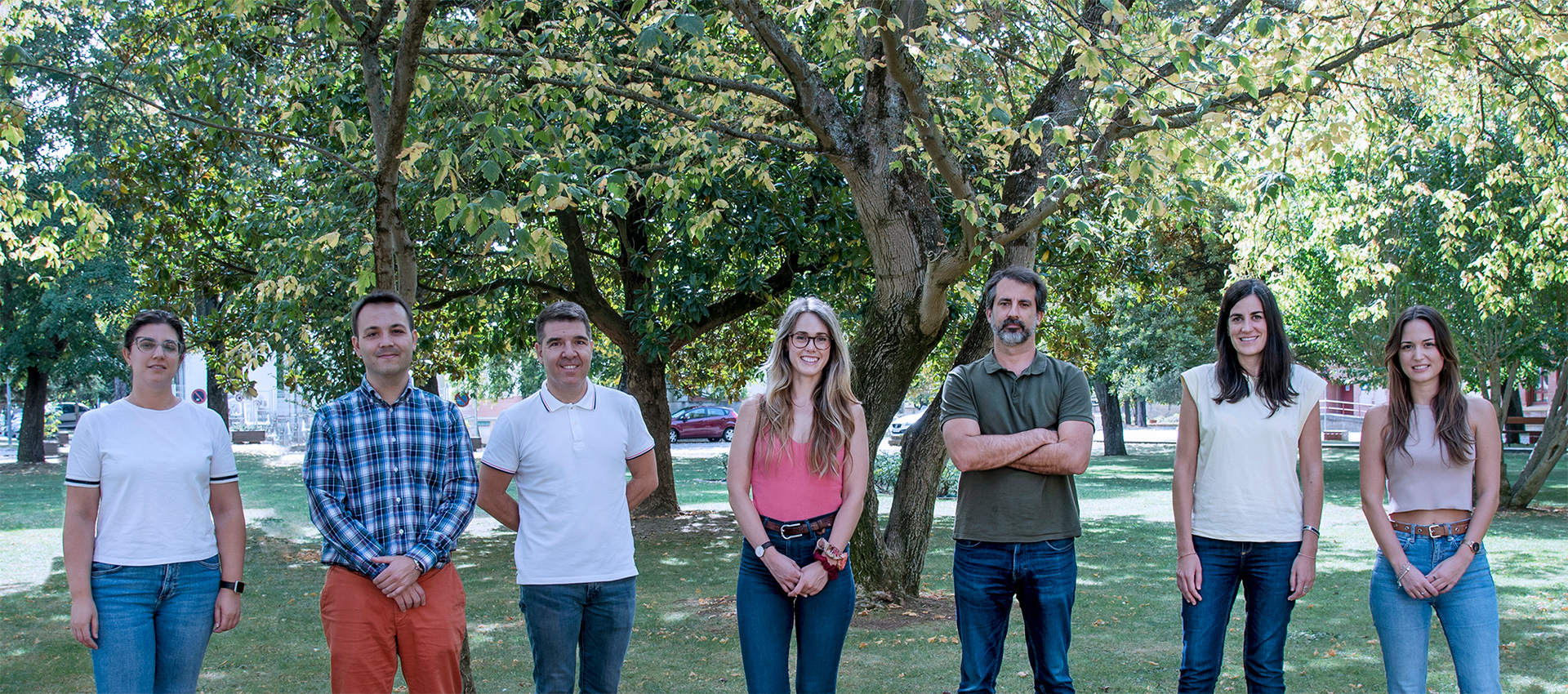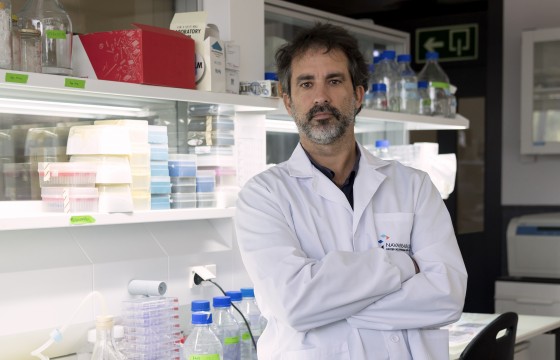
A study by Navarrabiomed and the Cima University of Navarra offers new therapeutic targets to prevent the development of metastases in melanoma-type skin cancer
- The team has analysed the role of fatty acid metabolism in the development of metastatic melanoma.
Navarrabiomed's Cancer Signalling Unit has led an investigation, in close collaboration with researchers from the Cima University of Navarra, which presents new therapeutic targets in patients with melanoma, a type of skin cancer with a special ability to produce metastases. The study makes it possible to advance in the development of new therapies aimed at preventing the development of secondary tumours in vital organs such as the liver or lungs.
Scope of the research
Research has focused on the study of the so-called Circulating Tumour Cells (CTCs), responsible for haematogenous metastases. This type of metastasis is generated from tumour cells that leave the primary tumour, go into the bloodstream and spread throughout the organism/body. Some of these CTCs are able to settle in internal organs such as bone, lung, liver or brain, forming secondary tumours or metastases. Metastases cause 90% of cancer mortality. Current knowledge of these tumour cells, and the process by which they adapt to survive in the bloodstream, is very limited and studies such as the one presented gain relevance.
Specifically, the team has discovered that CTCs reorganize fatty acid metabolism in order to survive and this has made it possible to identify two possible therapeutic targets, CRAT and CROT genes, which regulate CTC survival. They have further identified two drugs, ranolazine and thioridazine, the use of which is already approved in humans and which block fatty acid metabolism to reduce the ability of CTCs to generate haematogenous metastases.
“The identification of these two therapeutic targets is encouraging. Use of ranolazine and thioridazine as a cancer treatment has great potential. Today we are studying its possible combination with other drugs that are currently administered to patients with metastatic melanoma to increase their effectiveness”, as noted by Imanol Arozarena.
This study highlights the extraordinary ability of tumour cells to adapt to different microenvironments and contributes to an increasingly relevant field of research on the role of lipid metabolism in the development of metastatic diseases.
It is also the first study that associates the fatty acid metabolism that occurs in peroxisomes (small cellular organelles) with metastasis. Until now, the scientific community had not paid attention to peroxisomes and we trust that our study will serve to focus on the cellular functions of these organelles in future cancer research.
Public-private partnership
The study has been carried out from the Cancer Signalling Unit of Navarrabiomed, fronted by Imanol Arozarena Martinicorena, and is part of the doctoral thesis of the centre's pre-doctoral researcher of the, Irene Lasheras Otero. The team has worked in close collaboration with the Oncogenes and Effector Targets group directed by Silve Vicent, and which is part of the Solid Tumours Program of the Cima University of Navarra. Other Navarrabiomed units such as Proteomics and Bioinformatics have also participated.
The results have been published in Journal of Investigative Dermatology and, are included among the scientific output of the Institute of Health Research of Navarra (IdiSNA), a public-private association for the promotion of biomedical research in the Autonomous Community in which both research centres participate. The Navarrabiomed team has further announced the research work at the “Metabolism Symposium” of the University of California San Francisco (USA) held on June 17 and at the “Metabolism and Cancer” Conference, organized by the European Association for Cancer Research (EACR), which recently took place in Bilbao from the 11th to the 13th of October.
The Government of Navarra and the Ministry of Economy and Business, through the Carlos III Health Institute-ERDF, have financed this study.
Incidence
In 2021, 6,100 new cases of metastatic melanoma were diagnosed in Spain, causing the death of 90% of all those affected by melanoma. Worldwide, this type of cancer accounts for 1.7% of the total oncological cases detected, although its incidence rate is growing at a high pace compared to other more common tumours. These figures put the focus on prevention and, therefore, on the main cause of skin cancer: unprotected exposure to ultraviolet radiation from the sun and also from UV tanning beds/booths.
In the last decade, mortality from metastatic melanoma has been reduced by 30% thanks to the emergence of targeted therapies and immunotherapies. Studies such as the one presented will contribute to progress in reducing this rate, as well as in improving clinical treatments.
Photo caption: From left to right. Ana Olías (NB), Iker Feliu (Cima), Silve Vicente (Cima), Irene Lasheras (NB), Imanol Arozarena (NB), Paula Aldaz (NB) and Marta Redondo (NB).



